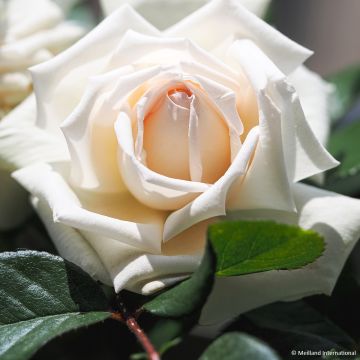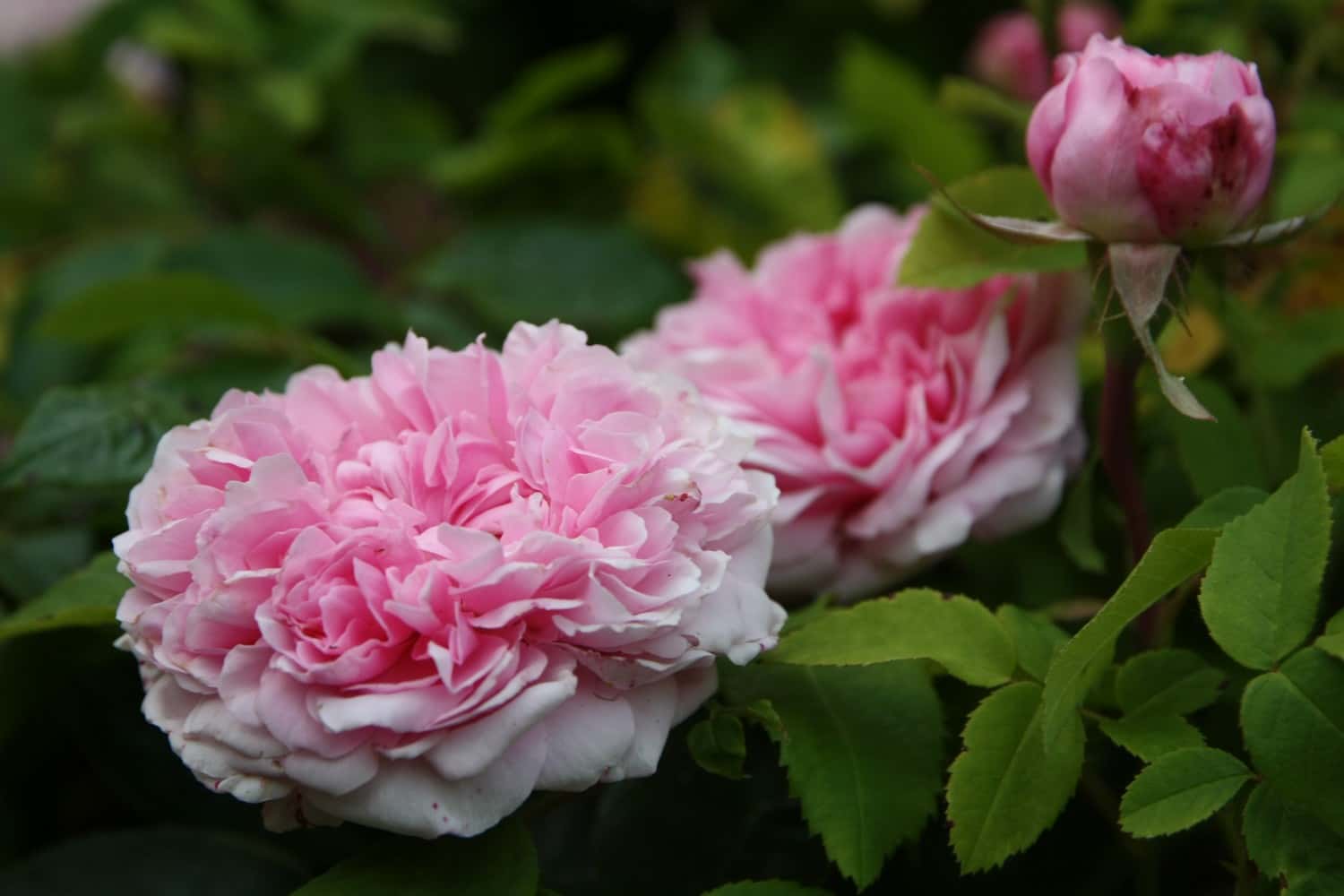
Propagate roses: when and how?
Easily multiply your favourite roses
Contents
Reproducing a variety found in an old garden, rejuvenating your plantings, multiplying your favourite roses, or preserving old roses that have become unavailable in the market are all good reasons to try your hand at the joys of propagation by cuttings. A cutting of a rose can be obtained more or less easily, depending on the chosen variety and the gardener’s skills.
Only amateur gardeners resort to propagating roses by cuttings. Professionals prefer grafting, as this technique is quicker and allows for a rose with more homogeneous growth.
From a rose cutting, it takes three to four years to obtain a plant of a decent size. Thanks to this technique, roses gain in longevity because they are not at risk of being outgrown by a rootstock whose vigour exceeds their own. As for the criticism of producing plants of lesser vigour, this is not always the case. Some varieties perform very well when propagated in this way, while others, on the contrary, need the vigour of the rootstock to develop properly.
Some gardeners make their rose cuttings planted in potatoes, in water bottles, or in Tetra Pak-type packaging, with newspaper and cellophane, with or without plant hormone, in pots or directly in the ground… Each person should experiment and find the technique that suits them best. However, be aware that you cannot propagate a rose in water!
There are several techniques for propagating a rose: propagation by hardwood cuttings, herbaceous cuttings, and semi-herbaceous cuttings (or half-hardened). It is this last technique that will give you the best chances of success, and we recommend you carry it out with the help of this advice sheet.
When to propagate roses?
Propagation by cuttings of roses is carried out during summer from August to September.
How to propagate roses?
The simplest method is to choose a freshly deflowered stem, the diameter of a pencil, and cut it just below a leaf.
- Equip yourself with protective gloves and a pruning shear. Remove the tip of your cutting by making a slanted cut just above a bud (at the base of a leaf). Additionally, cut the lower end with a straight cut just below a bud, so as to retain a section of 15 to 20 cm with three to four leaves.

Straight and slanted cuts of a rose cutting.
- Proceed with stripping and remove all leaves except for the top one.
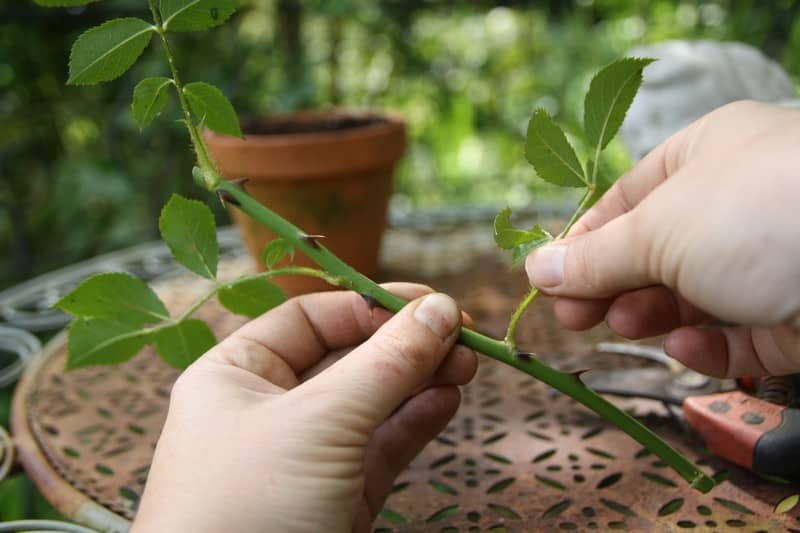
Stripping a rose cutting.
- To limit evaporation, leave only two to four leaflets (the rose leaf being composed of three, five, or seven leaflets) on the leaf you have left.
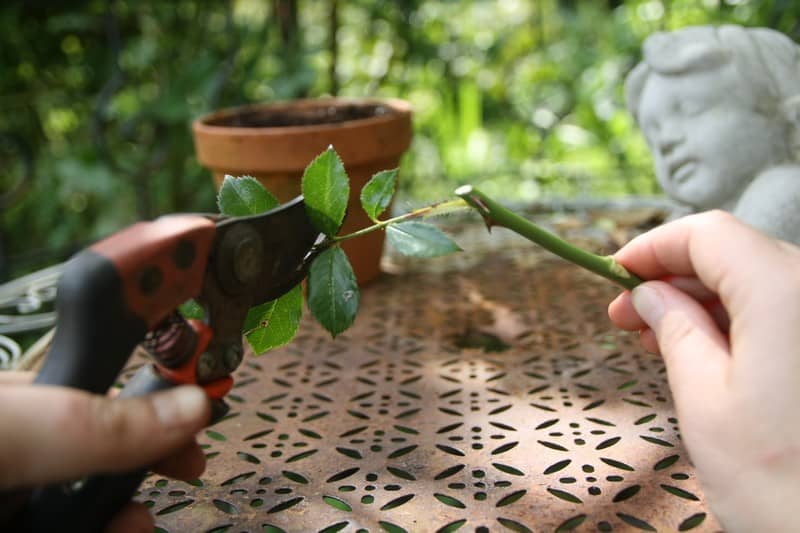
Leave only a few leaflets on your rose cutting.
- Remove the thorns which will create small wounds where roots can appear.
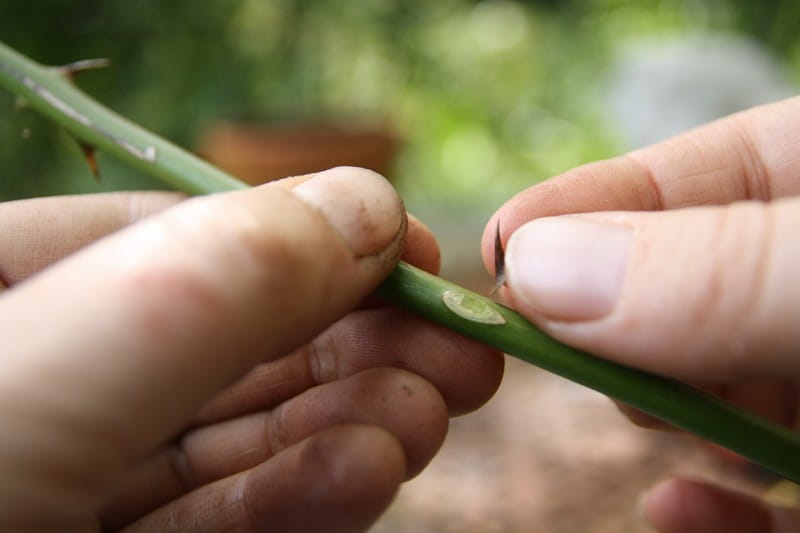
Remove the thorns from the rose cutting.
- Prepare several segments that you will wrap in a damp newspaper and place them for two or three days in the bottom of the refrigerator to lower the sap.
- After this time, dip the base of each segment in a little rooting hormone. Tap to remove the excess powder.
- If you have many cuttings, plant them in a furrow in the open ground in a well-ventilated, moist, and shaded area; otherwise, gather them in a pot previously filled with a porous mixture of potting soil and sand in equal parts. To do this, make a hole in your substrate with a stick and insert the cutting. Be sure to always plant your cuttings the right way up, that is, with the slanted cut at the top.
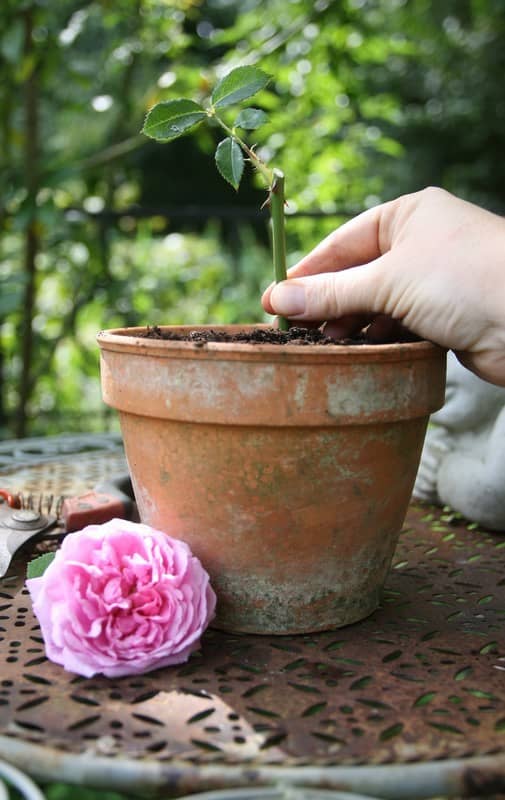
Positioning the rose cutting.
- Firmly pack the substrate to ensure it adheres to the cuttings.
- Water. In hot weather, place some moss between the cuttings to keep them cool. If you have potted them, place them in a shaded area.
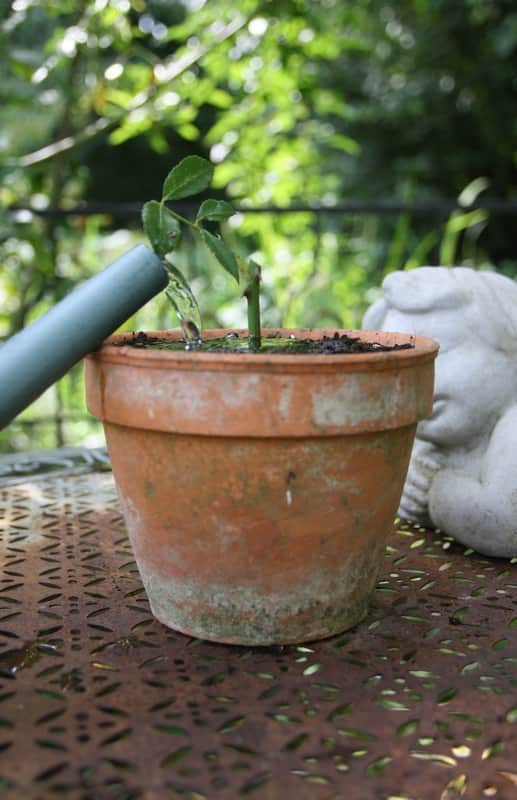
Firmly pack and water your rose cutting before placing it in a shaded area.
- During winter, protect them from the cold by placing them, if necessary, under a frame or under a bed of leaves that you will aerate as much as possible.
- In spring, transplant the cuttings into individual pots.
- When the root ball has formed well, you can place them in the open ground.
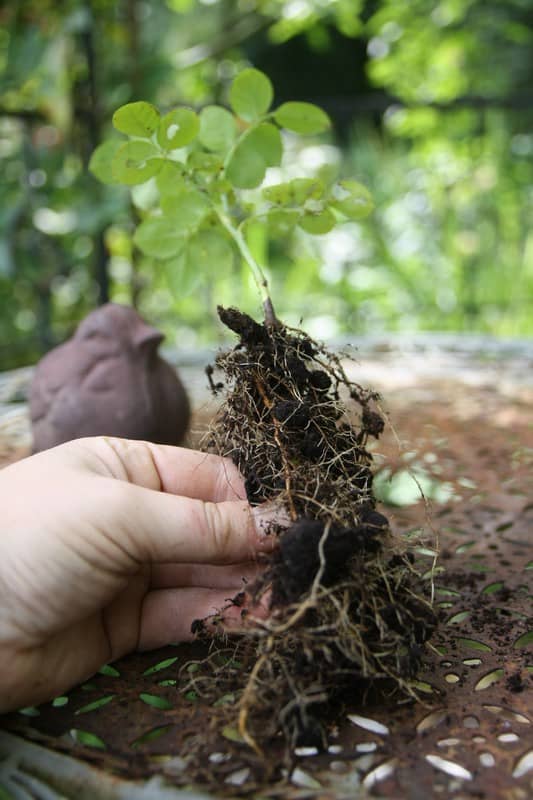 Well-rooted rose cutting.
Well-rooted rose cutting.
Note that cuttings taken during the lull of summer flowering, in July-August, sometimes root quite easily.
Not all species and varieties of roses propagate with the same ease. Generally, Tea, Noisette, Bengal, Polyantha, Bourbon, Wichuraiana, and all their hybrids propagate quite well. In contrast, Portland roses do not lend themselves to this.
Keep in mind that most varieties of roses are protected. Obtaining a rose is a long-term task that should be respected. The propagation of roses is tolerated within the framework of strictly private use.
Discover other Roses
View all →Available in 0 sizes
Available in 2 sizes
Available in 1 sizes
Available in 2 sizes
Available in 2 sizes
Available in 2 sizes
Available in 3 sizes
Available in 2 sizes
To learn everything about propagation by cuttings
Discover our article: “Propagation by cuttings, everything you need to know about the different techniques and our tips for successfully propagating your cuttings”
- Subscribe!
- Contents







































